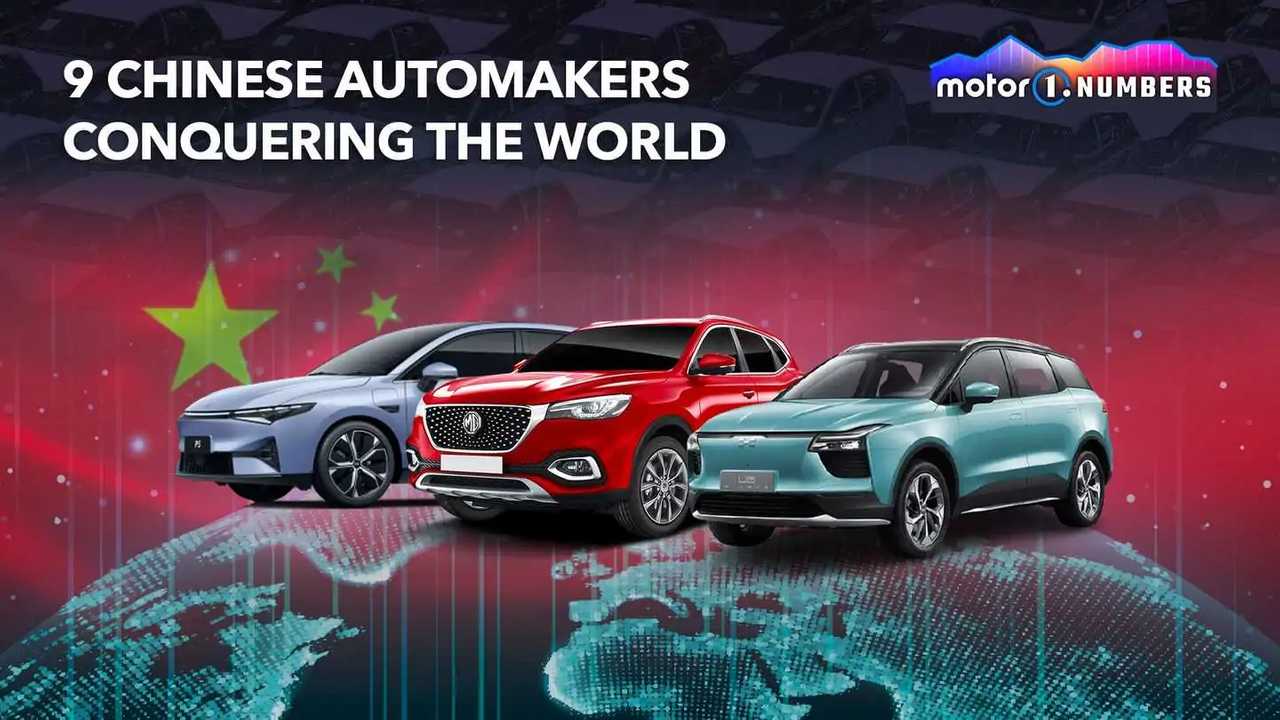Analyzing The Challenges Facing Premium Automakers In The Chinese Market: A Focus On BMW And Porsche

Table of Contents
Intense Competition from Domestic and International Brands
The Chinese luxury car market is no longer a duopoly of established international players. Domestic Chinese luxury brands are rapidly gaining market share, employing aggressive strategies to challenge the dominance of traditional players like BMW and Porsche. These domestic brands leverage a deep understanding of local consumer preferences and often offer competitive pricing, posing a considerable threat.
- Examples of Successful Chinese Luxury Brands: Hongqi, with its strong nationalistic appeal and modern designs, and Li Xiang, known for its innovative electric SUV offerings, are prime examples of successful domestic competitors. Other brands like Nio and BYD are also aggressively expanding their luxury segments.
- Competitive Pricing Strategies: Domestic brands often undercut established international competitors on price, offering comparable features and technology at a more affordable price point. This aggressive pricing strategy significantly impacts the profitability of premium automakers like BMW and Porsche.
- Technological Advancements and Features: Chinese brands are rapidly innovating, incorporating advanced technology, including autonomous driving features and cutting-edge infotainment systems, attracting tech-savvy Chinese consumers.
Evolving Consumer Preferences and Demand for New Energy Vehicles (NEVs)
A significant challenge for premium automakers in China is the rapid shift in consumer preferences towards New Energy Vehicles (NEVs). This includes electric vehicles (EVs), hybrid vehicles (HEVs), and plug-in hybrid electric vehicles (PHEVs). The Chinese government actively promotes NEV adoption through various incentives and regulations, further accelerating this trend.
- Growth in NEV Sales in China: China is the world's largest NEV market, experiencing exponential growth year-on-year. This rapid expansion necessitates significant investments from premium automakers to develop and offer competitive NEV models.
- Government Incentives and Regulations Promoting NEV Adoption: Government subsidies, tax breaks, and preferential license plate policies incentivize NEV purchases, making them increasingly attractive to consumers. Simultaneously, stricter emission regulations put pressure on premium automakers to reduce their reliance on internal combustion engine vehicles.
- Challenges in Meeting Consumer Demand for Advanced NEV Technology: Meeting the demand for advanced battery technology, charging infrastructure, and sophisticated autonomous driving features presents a major technological and logistical hurdle for premium automakers.
Supply Chain Disruptions and Economic Volatility
Global supply chain disruptions and economic volatility in China present additional obstacles for premium automakers. The availability of crucial parts and components is often affected by global events, impacting production and potentially delaying deliveries. Furthermore, economic fluctuations directly influence consumer spending on luxury goods, impacting sales volumes.
- Examples of Supply Chain Challenges: The semiconductor chip shortage and the impact of geopolitical tensions on logistics have directly affected the production capabilities of many premium automakers in China.
- Impact of Economic Uncertainty on Consumer Confidence and Luxury Car Sales: Economic downturns can significantly reduce consumer confidence, leading to decreased demand for luxury vehicles, even in a growing market like China.
- Strategies Employed by Automakers to Mitigate Supply Chain Risks: Diversifying sourcing, building strategic partnerships, and investing in local manufacturing capabilities are some of the strategies employed to mitigate these supply chain risks.
Maintaining Brand Image and Adapting to Local Market Needs
Maintaining a strong brand image while adapting to the unique nuances of the Chinese market is crucial for success. Premium automakers must carefully tailor their marketing strategies and product offerings to resonate with local preferences and cultural sensitivities.
- Cultural Nuances in Chinese Marketing and Advertising: Understanding the cultural values and preferences of Chinese consumers is essential for effective marketing. This includes adapting advertising campaigns, product features, and even dealership experiences to local tastes.
- Examples of Successful Localization Strategies: Successful brands often collaborate with local influencers, engage in targeted social media campaigns, and offer bespoke customization options to cater to Chinese consumers' unique needs and preferences.
- Challenges in Balancing Global Brand Identity with Local Market Needs: Maintaining a consistent global brand identity while adapting to specific local preferences requires a delicate balance.
Conclusion
Premium automakers in China face a complex web of challenges, from intense competition and evolving consumer preferences to supply chain disruptions and economic volatility. Understanding and adapting to the unique dynamics of the Chinese luxury car market is critical for long-term success. The need to embrace NEV technology and strategically address the evolving needs and preferences of Chinese consumers cannot be overstated. Deepen your understanding of the challenges faced by premium automakers in China to better appreciate the strategies required for success in this vital market. Learn more about the innovative approaches employed by successful premium automakers in China to navigate these complexities and thrive in this rapidly evolving landscape.

Featured Posts
-
 Wwe Raw Analyzing Seth Rollins And Bron Breakkers Assault On Sami Zayn
May 20, 2025
Wwe Raw Analyzing Seth Rollins And Bron Breakkers Assault On Sami Zayn
May 20, 2025 -
 Wnba Investigating Allegations Of Racial Slurs Against Angel Reese
May 20, 2025
Wnba Investigating Allegations Of Racial Slurs Against Angel Reese
May 20, 2025 -
 Chinas Pressure On Philippines Fails Missile System Remains Intact
May 20, 2025
Chinas Pressure On Philippines Fails Missile System Remains Intact
May 20, 2025 -
 Giorgos Giakoumakis Evaluating His Current Market Value For Mls Clubs
May 20, 2025
Giorgos Giakoumakis Evaluating His Current Market Value For Mls Clubs
May 20, 2025 -
 Actors And Writers Strike Hollywood Faces Unprecedented Production Shutdown
May 20, 2025
Actors And Writers Strike Hollywood Faces Unprecedented Production Shutdown
May 20, 2025
